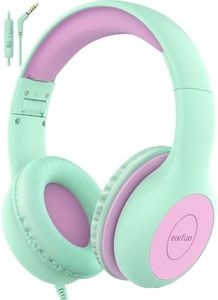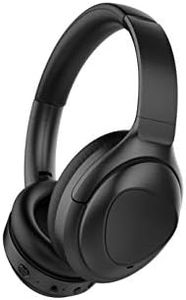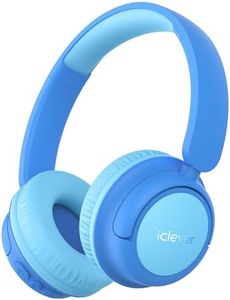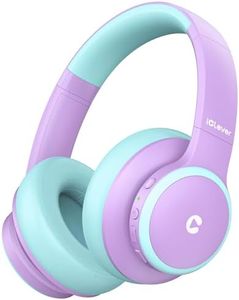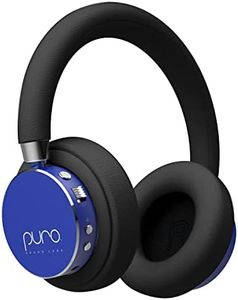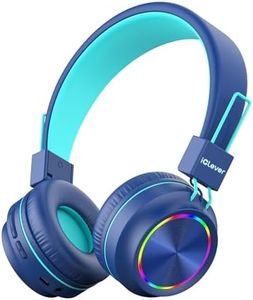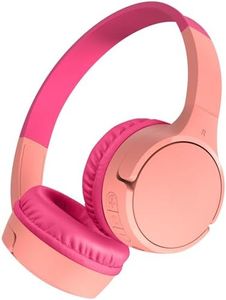We Use CookiesWe use cookies to enhance the security, performance,
functionality and for analytical and promotional activities. By continuing to browse this site you
are agreeing to our privacy policy
10 Best Durable Headphones For Kids
From leading brands and best sellers available on the web.Buying Guide for the Best Durable Headphones For Kids
When shopping for durable headphones for kids, it’s important to focus on designs and features that will keep the headphones safe from everyday drops and rough treatment. Kids might not always handle electronics gently, so you should prioritize durability, comfort, and safety features over flashy designs or advanced technology. Understanding the key specs will help you narrow down the options to find the perfect fit for your child’s age and needs.Build QualityBuild quality refers to how sturdy and well-constructed the headphones are. This is crucial for kids because their headphones need to withstand bending, twisting, and accidental drops. Look for products made from flexible plastics or reinforced materials. Sometimes the packaging or product description will mention 'kid-proof' or 'reinforced headbands.' For very young kids or those who may not be gentle, headphones with thick, flexible frames work best. Older children might be able to handle models with slightly less reinforcement, but durability should still be a priority.
Volume LimitingVolume limiting is a feature that prevents the headphones from playing music or audio at a level that could damage a child’s hearing. This is important because children’s ears are more sensitive and can be harmed by loud sounds. Headphones usually limit volume to around 85 decibels, which is considered safe for children. Make sure to check if a pair has this feature, especially for younger kids. If your child is older and more responsible, you may still prefer this function for safety.
Comfort and FitComfort and fit describe how well the headphones sit on your child’s head and ears and how comfortable they are to wear. Soft, adjustable padding and lightweight designs are best for children, ensuring they can wear them for extended periods without discomfort. Adjustable headbands are key for growing kids. For toddlers and small children, lighter and smaller headphones fit better, while older kids can handle larger designs. Always check the recommended age range and measurements.
Wired vs WirelessThis spec refers to whether the headphones use a cord (wired) or connect via Bluetooth (wireless). Wired headphones are simple, don’t need charging, and usually are more durable due to fewer moving parts. Wireless models offer more freedom and less chance of tangling, but require charging. For younger children or those who may lose things easily, wired models are often recommended. For older kids who are more responsible, wireless might be a practical choice.
Ease of CleaningEase of cleaning is about how simple it is to wipe down or sanitize the headphones. Kids can be messy, so headphones with removable or wipeable ear pads are practical. Avoid headphones with fabric-covered pads if they can’t be removed and washed. Prioritize smooth surfaces and removable parts, especially for younger children.
Portability and Folding DesignPortability refers to how easy the headphones are to carry around. Folding designs help make headphones compact for travel and reduce the risk of damage when stored in a backpack or drawer. Non-folding headphones are often more durable but may be bulkier. If your child will use headphones mostly at home, size matters less. For school or travel use, folding, lightweight designs are preferable.


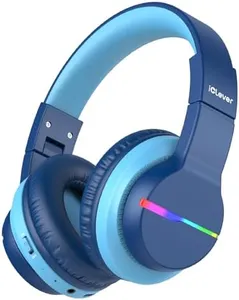

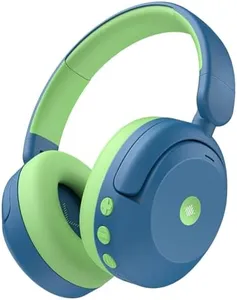
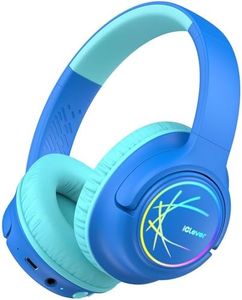

![[2 Pack] iClever Kids Headphones - 85dBA Safe Volume Limited- Wired Headphones for Kids Teens with Sharing Splitter, Tangle-Free Foldable Stereo Headset for School/Tablet/Travel/Mp3/4](https://images-proxy.bestreviews.guide/lfmM030Z8lfvkyfdIKnF19z9F-s=/0x300/https://m.media-amazon.com/images/I/41krBBA9geL._AC_CX679_.jpg)
